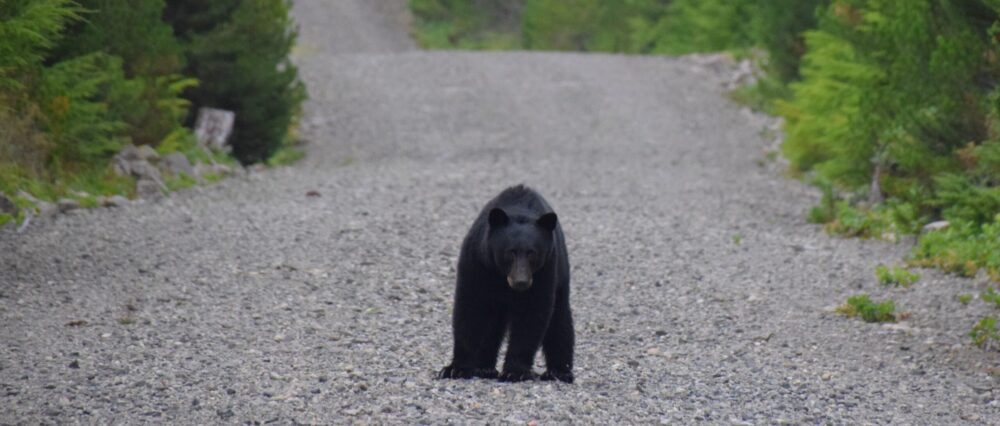
Photo by David Gurr
Meet the Haida Gwaii black bear. These bears are endemic to Haida Gwaii, meaning that they are not found anywhere else in the world! The Haida Gwaii black bear is a subspecies of the American black bear and is considered the largest of the subspecies. Over time they have evolved to have a larger head, jaw, and molars to crack open crabs and barnacles more easily [1]. Unlike mainland subspecies of the American black bear, the Haida Gwaii black bears are exclusively black with tan muzzles. They are omnivorous, meaning they eat a mixture of shellfish, salmon, and greenery (including berries in the summer). They hibernate for three to five months during the winter and make their dens in hollow cedar trees or stumps. Females typically give birth in while they’re hibernating in January to two or three cubs before coming out of hibernation in April or May. Haida Gwaii black bear cubs stay with their mothers for about a year and a half before moving on to make a life of their own [2].
Haida Gwaii black bears serve as a keystone species to the islands, meaning their presence has changed their environment, and their ecosystem would not function the same way without them. A large part of the bears’ diets include salmon, and they tend to bring at least part of the salmon carcasses inland to the forests. As I stated in a past blog post about the difference between Chinook and Coho salmon, salmon carcasses release nitrogen and phosphorous into the environment as they decomposition. By bringing dead salmon into the forests, the bears are fertilizing the soil and promoting healthy plant growth [3].
The bears prefer to avoid areas on the islands that have high populations of people but will enter these areas when hunting or foraging. If you come across a bear on the islands, it is recommended by Gwaii Haanas National Park Reserve to calmly leave the area. Bears typically will only attack people if they are startled or believe that their food source or cubs are being threatened [4]. They tend to prefer to mind their own business as they just want to live their lives and eat food like the rest of us!
[1] “Meet Haida Gwaii’s Black Bear,” Haida Tourism, accessed January 27, 2022, https://www.haidatourism.ca/news/blog-post-title-four-kp8hj.
[2] “Haida Gwaii Black Bear,” Bear Conservation, accessed January 27, 2022, http://www.bearconservation.org.uk/haida-gwaii-black-bear/.
[3] “Meet Haida Gwaii’s Black Bear.”
[4] Government of Canada Parks Canada Agency, “Bear Aware – Gwaii Haanas National Park Reserve, National Marine Conservation Area Reserve, and Haida Heritage Site,” May 8, 2019, https://www.pc.gc.ca/en/pn-np/bc/gwaiihaanas/securite-safety/ours-bears-1.
